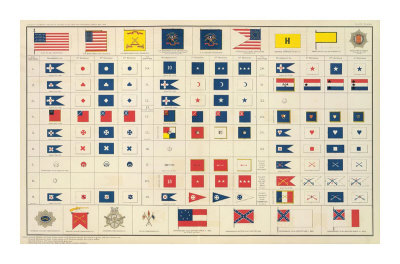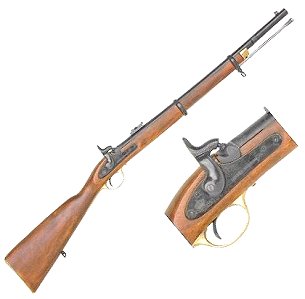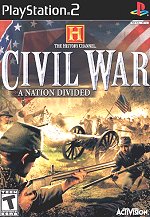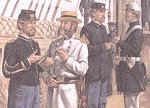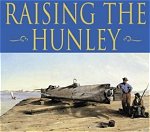USS Wyoming
A wooden-hulled screw sloop-of-war—was laid down at the Philadelphia Navy Yard in July 1858; launched on 19 January 1859; sponsored by Miss Mary Florida Grice; and commissioned in October 1859, Comdr. John K. Mitchell in command.
Wyoming soon sailed via Cape Horn for the Pacific and arrived off the coast of Nicaragua in April 1860. There, she relieved Levant and operated along the Pacific coast of the United States and Central America into the spring of 1861. During that time, she participated in the search for the sloop Levant when that warship disappeared in the late autumn of 1860.
The outbreak of the Civil War found Wyoming at San Francisco, Calif., preparing for another cruise. She was instructed to remain in the vicinity of the Golden Gate to protect mail steamers operating off the California coast, but Comdr. Mitchell—a naval officer of Southern origin and persuasion—defied his orders and took his ship to Panama instead.
Mitchell's flagrant disobedience cost him his command and also resulted in his dismissal from the service. As a result, Wyoming came under the temporary command of her executive officer, Lt. Francis K. Murray, on 4 July 1861. While returning to Monterey, Calif., Wyoming was plagued by mishaps. First, her bottom struck a coral head off La Paz, Mexico, and was pulled free only after three days aground during which she lost her false keel. She then ran short of coal and arrived at Monterey with empty bunkers.
Wyoming subsequently shifted to San Francisco where, on 9 August, she received a new commanding officer, Comdr. David Stockton McDougal. The warship then proceeded to the coast of Lower California to protect American whaling interests against possible incursions by Confederate cruisers. After that service, she operated in South American waters into 1862.
Following repairs at Mare Island, Wyoming received orders—dated 16 June 1862—to proceed immediately to the Far East in search of "armed piratical cruisers fitted out by the rebels" and soon headed west, bound for the Orient.
Word of the Union ship's subsequent appearance in Far Eastern waters spread fast and far. In the Strait of Sunda, off Java, Capt. Raphael Semmes, the commanding officer of Confederate cruiser Alabama, learned from an English brig of Wyoming's arrival in the East Indies; and a Dutch trader later confirmed this report. On 26 October, Semmes wrote confidently in his journal that "Wyoming is a good match for this ship," and "I have resolved to give her battle. She is reported to be cruising under sail—probably with banked fires—and anchors, no doubt, under Krakatoa every night, and I hope to surprise her, the moon being near its full."
Although in their search for each other, Wyoming and Alabama unknowingly came close to each other, they never met; and it would be up to another Union warship, the sloop Kearsarge, to destroy the elusive Confederate raider. Yet, despite being unsuccessful in tracking down Confederate cruisers, Wyoming did render important service to uphold the honor of the American flag in the Far East the following year, 1863.
Ordered to Philadelphia that spring—after what had been a largely fruitless cruise—Wyoming was in the midst of preparations to leave the East Indies Station when an event occurred that changed her plans.
In May 1863, Wyoming had "showed the flag" to Yokohama, standing by to protect American lives and property during an outbreak of anti-foreign agitation in Japan. Nevertheless, that agitation continued into the early summer months, as the Japanese began to resent all foreigners in their country. Urged by his advisors, the Japanese Mikado had set 25 June 1863 as the date for the expulsion of all aliens.
Although he was largely powerless to force compliance with his directive, some officials took it literally and tried to impement it. One attempt of this kind was made by the powerful local ruler of the clan of Choshiu, the Prince of Nagato.
That clan, the most warlike in Japan and the one which could be said to have been the forerunner of the modern Japanese Army, threw down the gauntlet to western nations on 26 June. At one o'clock that morning, two armed vessels—illegally flying the flag of the Japanese central government, or shogunate, attacked the American merchantman Pembroke, bound for Nagasaki and Shanghai, as she lay anchored in the Strait of Shimonoseki. Fortunately, Pembroke suffered no casualties; got underway; and moved out of danger, escaping via Bungo Strait and continuing her voyage for Shanghai, post-haste, without making her scheduled stop at Nagasaki.
Word of the incident did not reach Yokohama from Japanese sources until 10 July. That evening, mail from Shanghai brought "authentic information" confirming the Japanese report. The United States Minister in Japan, Robert H. Pruyn, sent for the Minister of Foreign Affairs for the Japanese government and informed him—in the presence of Comdr. McDougal— of the gravity of the situation, stressing that an insult to the American flag was a serious matter. After being told by Pruyn that the United States government would demand satisfaction and expect a statement from the Japanese concerning the offense, the Japanese diplomat begged that the Americans do nothing until his government at Yedo (later named Tokyo) would take action.
After the Japanese left, McDougal told Pruyn that he had decided to proceed instantly to the Shimonoseki Strait to seize and, if necessary, to destroy, the offending vessels. The two men agreed that failure to punish the outrage properly would encourage further anti-foreign incidents.
Accordingly, Wyoming prepared for sea. At 4:45 a.m. on 13 July, Comdr. McDougal called all hands; and the sloop got underway 15 minutes later, bound for the strait. After a two-day voyage, Wyoming arrived off the island of Hime Shima on the evening of 15 July and anchored off the south side of that island.
At five o'clock the following morning, Wyoming weighed anchor and steamed toward the Strait of Shimonoseki. She went to general quarters at nine, loaded her pivot guns with shell, and cleared for action. The warship entered the strait at 10:45 and beat to quarters. Soon, three signal guns boomed from the landward, alerting the batteries and ships of the daimyo Choshiu of Wyoming's, arrival.
At about 11:15, after being fired upon from the shore batteries, Wyoming hoisted her colors and replied with her 11-inch pivot guns. Momentarily ignoring the batteries, McDougal ordered Wyoming to continue steaming toward a bark, a steamer, and a brig at anchor off the town of Shimonoseki. Meanwhile, four shore batteries took the warship under fire. Wyoming answered the Japanese cannon "as fast as the guns could be brought to bear" while shells from the shore guns passed through her rigging.
Wyoming then passed between the brig and the bark on the starboard hand and the steamer on the port, steaming within a pistol shot's range. One shot from either the bark or brig struck near Wyoming's forward broadside gun, killing two men and wounding four. Elsewhere on the ship, a marine was struck dead by a piece of shrapnel.
Wyoming, in hostile territory, then grounded in uncharted waters shortly after she had made one run past the forts. The Japanese steamer, in the meantime, had slipped her cable and headed directly for Wyoming —possibly to attempt a boarding. The American man-of-war, however, managed to work free of the mud and then unleashed her 11-inch Dahlgrens on the enemy ship, hulling and damaging her severely. Two well-directed shots exploded her boilers and, as she began to sink, her crew abandoned the ship.
Wyoming then passed the bark and the brig, firing into them steadily and methodically. Some shells were "overs" and landed in the town ashore. As Comdr. McDougal wrote in his report to Gideon Welles on 23 July, "the punishment inflicted (upon the daimyo) and in store for him will, I trust, teach him a lesson that will not soon be forgotten."
After having been under fire for a little over an hour, Wyoming returned to Yokohama. She had been hulled 11 times, with considerable damage to her smokestack and rigging. Her casualties had been comparatively light: four men killed and seven wounded—one of whom later died. Significantly, Wyoming had been the first foreign warship to take the offensive to uphold treaty rights in Japan.
However, the ship's projected return to Philadelphia did not materialize due to the supposed continued presence of Alabama in Far Eastern waters. She repaired her damages, resumed the search and sailed to the Dutch East Indies. She subsequently voyaged to Christmas Island, examining it to determine whether or not it was used as a supply base for "the use of rebel cruisers." Finding the island uninhabited and the report of its use as a supply base unfounded, Wyoming returned to Anjer, Java, where McDougal found out, to his surprise, that Alabama had passed the Sunda Strait on 10 November—only a day after Wyoming had sailed for Christmas Island. At noon that day, Alabama and Wyoming had been only 25 miles apart.
Writing from Batavia on 22 November, McDougal later reported that Wyoming had scoured the waters of the East Indies, visiting "every place in this neighborhood where she (Alabama) would likely lay in case she intended to remain in this region." Although acknowledging that the condition of Wyoming's boilers prevented a heavy pressure of steam from being carried, McDougal promised to make every effort in his power to find and capture Alabama.
Wyoming then cruised to Singapore in search of the Confederate raider, but found nothing, and continued on to the Dutch settlement of Rhio, near Sunda Strait. She subsequently sailed north, putting into Cavite, Luzon, in the Philippine Islands, on Christmas Eve. There, through the courtesy of the Spanish Navy, Wyoming underwent much-needed boiler repairs and coaled. She then sailed for Hong Kong and Whampoa, China.
Wyoming continued her search for the elusive Alabama into February of 1864. She sailed to Foochow, China, to protect American interests and proceeded thence, via Hong Kong, to the East Indies. When the sloop-of-war reached Batavia, however, Comdr. McDougal found that there was now no alternative but to return to the United States for repairs, because the ship's boilers were in such poor condition. Accordingly, Wyoming began her long-delayed return voyage to the United States, via Anjer, the Cape of Good Hope, St. Helena, and St. Thomas. After a voyage of almost three months, she arrived at the Philadelphia Navy Yard on 13 July 1864; having completed a circumnavigation of the globe begun when she left that port following her commissioning.
The presence of CSS Florida off the east coast, however, meant another change in plans for the weary Wyoming. Commodore C. K. Stribling, commandant of the Philadelphia Navy Yard, ordered the newly arrived screw sloop to sea to search for Florida. "It is with regret that I send you on this service," Stribling wrote McDougal, "After so long a cruise, and one in which you have rendered such important service, yourself, officers and crew, were entitled to a resnite from active service; but the great importance of capturing the rebel privateer will, I hope, be an incentive to all under your command cheerfully to perform this service."
Although Wyoming required extensive repairs, she nevertheless sailed. As events proved, however, Wyoming's machinery—so long from repairs in an American navy yard—proved unequal to the strain. For five days, the ship attempted to carry out the orders given her—contending with fresh northeast winds and a head sea—but returned to Philadelphia on 19 July, due to a leaky boiler. She was decommissioned on 23 July for a complete overhaul.
Recommissioned on 11 April 1865, Comdr. John P. Bankhead in command, Wyoming proceeded to the East Indies Station, via Cape Horn, and reached Singapore on 25 September 1865, in time to participate in the search for CSS Shenandoah, a Confederate raider which remained at sea for one month after the end of the Civil War.

Confederate Ironclad vs Union Ironclad: Hampton Roads 1862
The Ironclad was a revolutionary weapon of war. Although iron was used for protection in the Far East during the 16th century, it was the 19th century and the American Civil War that heralded the first modern armored self-propelled warships.
Kindle Available

Naval Strategies of the Civil War: Confederate Innovations and Federal Opportunism
Compare and contrast the strategies of the Southern Secretary of the Navy, Mallory, against his rival in the North, Welles. Mallory used technological innovation and the skill of individuals to bolster the South's seapower against the Union Navy's superior numbers
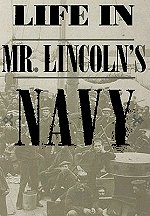
Life in Mr. Lincoln's Navy
A tantalizing glimpse into the hardships endured by the naval leadership to build and recruit a fighting force. The seaman endured periods of boredom, punctuated by happy social times and terrifying bouts of battle horror
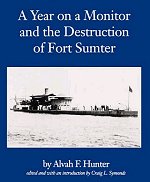
Year on a Monitor and the Destruction of Fort Sumter
Personal view of the Civil War Navy. The monitor saw action in several significant naval assaults by the Union's Squadron. It took part in the failed Federal attack on Sumter in April 1863. The "Nahant" also participated in the capture of the Confederate Ram "Atlanta," and in the assault on Fort Wagner
